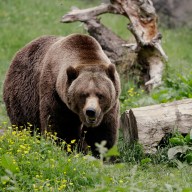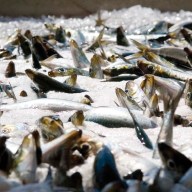SANDPOINT, Idaho – In this age of big-box stores, Sandpoint offers the little box: the labyrinthine used bookstore, the coffee shop with a sagging couch and a pile of magazines, and a family-owned pharmacy and tool store that sells rubber bands, wheelchairs, birdseed, and dolls.
Just an hour south of the Canadian border, tiny Sandpoint (population 7,000) offers another counterpoint to prevailing perceptions as well, by defying the idea that fall foliage is something you only find in the eastern United States.
Northern Idaho’s trees are mostly different from the eastern hardwoods that light up the mid-Atlantic states in the fall. The mountains are dominated by evergreens, but they have some deciduous species such as quaking aspen, cottonwood and willow.
But just as in the East, the trees here also display a stunning mix of colour as winter approaches. The western larch, also called the tamarack, turns a bright gold as its needles drop to the ground.
“You’ll see this mixture of yellow and deep green all through the woods,” said forester Chris Schnepf, a forester who lives and works in Coeur d’Alene, also in northern Idaho. “You get this velvety yellow mat on the ground.”
People who live in the West get used to noticing colour at its most subtle. They appreciate the muted green of sage-covered hills with splashes of purple or yellow wildflowers.
Clear-cut mountainsides provide some of Schnepf’s favourite fall foliage viewing. Logging sometimes has the same effect as a fire, he said, revealing the colour of smaller plants like huckleberries, dogwoods, and rocky mountain maples.
“It’s the shrubs where you get the most colour,” said Schnepf.
But it’s not all understated. In the fall, the round yellow leaves of the aspens glimmer like a basket of gold coins. And over the last 100 years or so, homeowners and city foresters have planted the eastern trees — like maples, elms, oaks, and flowering plums — that made the New England states famous for their fall foliage.
“In the older sections of town they create a beautiful canopy of colour, this tunnel of autumn leaves,” said Dave Kilmer, who captains a 18-metre private sailboat on Lake Coeur D’Alene.
You don’t have to know the name of the plant to appreciate it. Chic Burge, a photographer who works in a store called Camera Corral in Coeur d’Alene, leads foliage hiking tours in the mountains along the border of Idaho and Montana, where colour peaks at the end of September and first half of October.
Burge looks for huckleberries and another bush he’s never been able to identify. It turns a bright burnt orange.
And “you don’t want to forget the yellows,” Burge said, noting that many grasses turn that colour in winter. “They’re quite spectacular also.”
So what to do while you’re looking around? Idaho’s culture and history is rooted in natural resources like agriculture, logging and mining, and the region’s fall festivals make the most of those roots. While fall visitors will have missed community events devoted to lentils, garlic and huckleberries, they’re just in time to see sheep herders moving the sheep down to lower pastures for the winter.
That’s the basis for Sun Valley’s popular Trailing of the Sheep festival, which falls on Oct. 8-10 this year. Idaho’s sheep industry, started by Basque and Scottish settlers in the central Idaho mountains, once rivalled Australia’s. While other industries like potatoes and microchips have since overtaken ruminants, plenty of sheep farming continues in Idaho, and it’s celebrated in Sun Valley with a parade, sheep-related poetry reading and storytelling, and workshops on spinning, weaving and cooking. While the festival is well orchestrated, the sheep migration itself is not something put on for tourists. It goes on in many parts of the state whether anyone’s watching or not.
Sandpoint, a former logging town, is at once unpretentious and spectacular. Like Coeur d’Alene, it makes the most of its lake — in this case Idaho’s largest, Lake Pend Oreille.
Someone in Sandpoint’s recent history evidently recognized the value of the town’s eclectic and beautiful old structures and managed to stop them from being cleared away for the parking lots and chain stores that feature in so many U.S. towns. The result is an inviting panoply of shops, restaurants and galleries. Some, like Sandpoint Super Drug & Ace Hardware, retain the homey feeling that the dizzying jumble of random goods once offered at five-and-dime stores from past decades.
Westerners know that New England is famous for its foliage, and that the West isn’t. But they think it should be.
“They think they’re top dog,” said Burge, who goes out of his way to point out the best foliage to friends from the East. “We have as good fall colours here as they do there.”
The West also has something lacking in most Eastern states: the space to enjoy the landscape on your own, or in the company of some cattle or sheep.
“Really the coolest thing about all of it is here we have very few people,” Burge said.
















